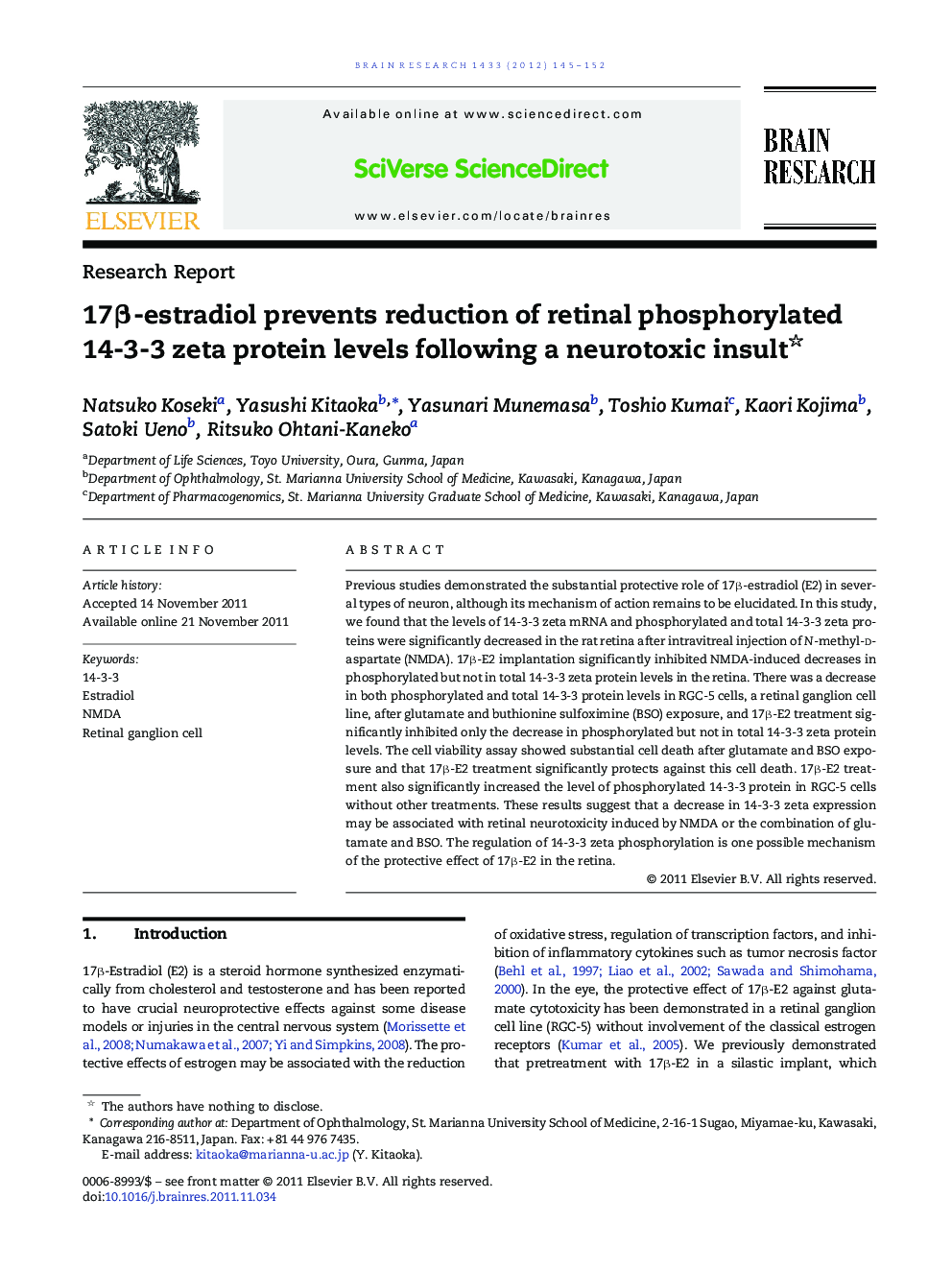| کد مقاله | کد نشریه | سال انتشار | مقاله انگلیسی | نسخه تمام متن |
|---|---|---|---|---|
| 4325492 | 1614006 | 2012 | 8 صفحه PDF | دانلود رایگان |

Previous studies demonstrated the substantial protective role of 17β-estradiol (E2) in several types of neuron, although its mechanism of action remains to be elucidated. In this study, we found that the levels of 14-3-3 zeta mRNA and phosphorylated and total 14-3-3 zeta proteins were significantly decreased in the rat retina after intravitreal injection of N-methyl-d-aspartate (NMDA). 17β-E2 implantation significantly inhibited NMDA-induced decreases in phosphorylated but not in total 14-3-3 zeta protein levels in the retina. There was a decrease in both phosphorylated and total 14-3-3 protein levels in RGC-5 cells, a retinal ganglion cell line, after glutamate and buthionine sulfoximine (BSO) exposure, and 17β-E2 treatment significantly inhibited only the decrease in phosphorylated but not in total 14-3-3 zeta protein levels. The cell viability assay showed substantial cell death after glutamate and BSO exposure and that 17β-E2 treatment significantly protects against this cell death. 17β-E2 treatment also significantly increased the level of phosphorylated 14-3-3 protein in RGC-5 cells without other treatments. These results suggest that a decrease in 14-3-3 zeta expression may be associated with retinal neurotoxicity induced by NMDA or the combination of glutamate and BSO. The regulation of 14-3-3 zeta phosphorylation is one possible mechanism of the protective effect of 17β-E2 in the retina.
► Decreases in 14-3-3 zeta expression may be associated with retinal neurotoxicity.
► RGC-5 cells contain abundant 14-3-3 zeta.
► 14-3-3 zeta phosphorylation is one mechanism of the protective effects of 17β-E2.
Journal: Brain Research - Volume 1433, 18 January 2012, Pages 145–152